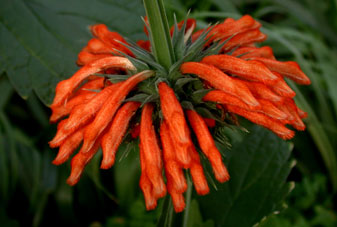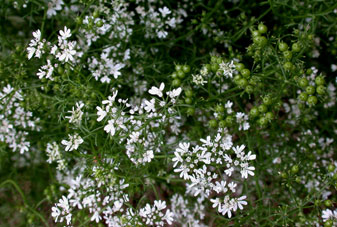Researchers help shed new light on medicinal benefits of plants

Wild Dagga
cientists in the School of Pharmacy's National Center for Natural Products Research, together with colleagues at a number of other institutions around the country, have developed new resources poised to unlock yet another door in the hidden garden of medicinally important compounds found in plants.
The resources were developed by the Medicinal Plant Consortium, led by Joe Chappell, professor of plant biochemistry in the University of Kentucky College of Agriculture. They grew out of a $6 million initiative from the National Institutes of Health to study how the genes of plants contribute to production of various chemical compounds, some of which are medicinally important.
"Our major contribution to this project is to provide biogenetic samples of well-known medicinal plants for the advancement of drug discovery and development," said Ikhlas Khan, professor of pharmacognosy and assistant director of NCNPR.
"Most people are unaware that [more than] 50 percent of the current anticancer drugs have originated from medicinal plant sources. Additionally, according to the World Health Organization, 80 percent of the world's population relies on herbal medicines for [its] health needs. Many plants are commonly used as dietary supplements as well as other natural products that come to consumers in the form of cosmetics, fragrances and household products."
The MPC project also includes participants from Michigan State University, Iowa State University, Purdue University, Texas A&M University, Massachusetts Institute of Technology, University of Kentucky and the John Innes Institute in Norwich, England. The associated researchers represent a broad spectrum of expertise, from plant biology and systematics to analytical chemistry, genetics and molecular biology, and drug development from natural products.

Baleria
"Thanks to the funding received for these projects, the talents and skills of experts from all of these institutions have been brought together with the goal of forging a new model in drug discovery," said Chappell, the MPC project coordinator.
Some well-known medicines have come from plants. For instance, the foxglove plant gives us the cardiac muscle stimulant digoxin, and the periwinkle plant offers a source for the widely used chemotherapy drugs vincristine and vinblastine. Similarly the anticancer agent Taxol is derived from the bark of the Pacific yew tree (Taxus brevifolia).
These and many other medicinal plants, often commonly found in household gardens and flower boxes, represent cornucopias of compounds ripe for discovering and developing diverse medicinal applications.
"The current understanding of the molecules and genes involved in the formation of plant-derived medicinal compounds is very incomplete," Chappell said. "However, the ability to conduct genome-wide studies of model plant species has resulted in an explosive increase in our knowledge of and capacity to understand the biological processes."
Work conducted at UM's natural products research center has provided a foundation of information for studies of several potentially useful plants, said Troy Smillie, a senior research scientist at the center.
"This research will provide the scientific community with several sets of valuable data that can be used to significantly further the understanding of how the inherent transcriptomic information encoded within each of these medicinally important plants allows for the respective production of their unique chemistries," Smillie said.
During this two-year project funded through the American Recovery and Reinvestment Act, researchers from the consortium set out to develop a collection of data that would aid in understanding how plants make chemicals, a process called biosynthesis. This knowledge ultimately could make it possible to engineer plants to produce larger quantities of medicinally useful compounds as well as different versions with other therapeutic potential.

Coriander
To develop the resources, the researchers studied the genes and chemical composition of 14 plants known for their medicinal properties or compounds with biological activity. These included plants such as Ginkgo biloba, Hoodia gordonii, Panax quinquefolius and Valeriana officinalis that were provided by the UM researchers. Altogether, these efforts are providing a rich toolbox for researchers to discover the means for how nature's chemical diversity is created, thus empowering efforts to uncover new drug candidates and increase the efficacy of existing ones.
Khan and his UM colleagues obtained materials for the medicinal plants in the study. His lab also performed the initial processing of materials to determine the plants' chemical profiles and to obtain their genetic blueprints to study how genes control the various chemical compositions.
"This work offers a valuable data resource for understanding the genes, enzymes and complex processes responsible for the biosynthesis of important plant-derived drugs," said Warren Jones, who manages this grant and other research grants in biotechnology at NIH's National Institutes of General Medical Sciences, through which the ARRA funds were provided. "The collaborative effort should greatly contribute to our ability to understand and exploit the rich biochemistry found in plants."
| 
